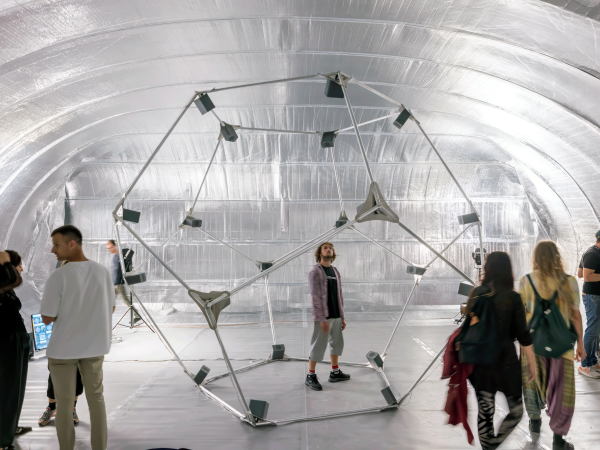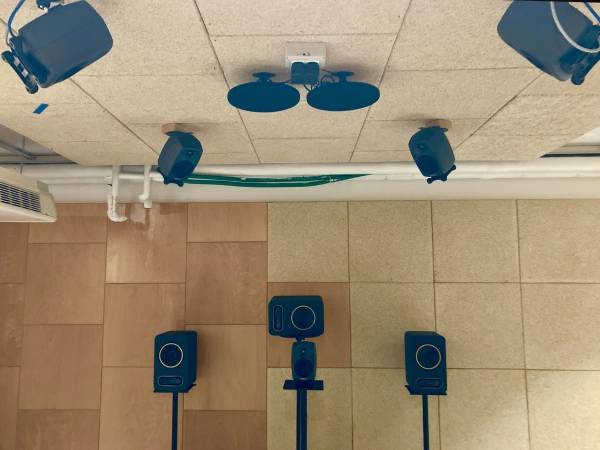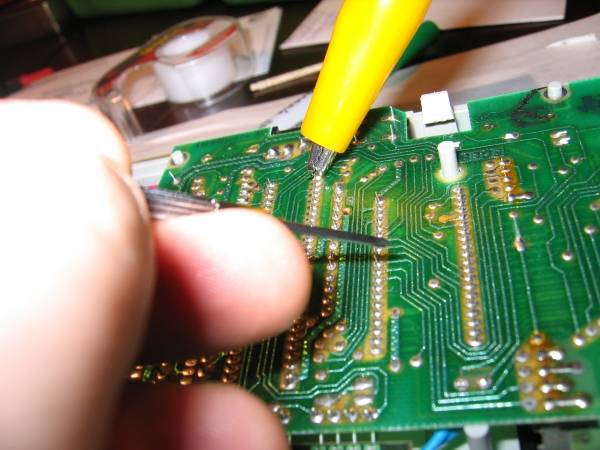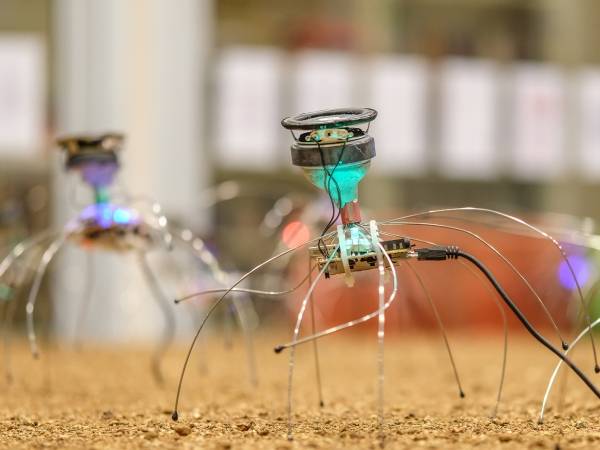5 Minuten
For a long time, not much has changed in the way we listen to music or a live concert together. A stage, a loudspeaker to the left and right, and, for a few decades now, many people in a row. We have become very accustomed to the fact that what we hear and what we see often don't correspond, that if we are not standing in the middle, the voice comes from somewhere else than it should. If you want to create a subtle tonal atmosphere in the theater, the audience's imagination is required to help when the birds are only chirping at you from the top left. And if you want to overwhelm the audience, you can simply turn up the volume - including a sudden loss of hearing. It doesn't have to be like this anymore. Theoretically, solutions have been on the table for a long time - or in the drawer. Now we should finally get down to implementing them.
Possible transformations of performance practice through affordable multichannel systems
The film and gaming industries have long recognized the benefits of immersive sound and have implemented them consistently. Cinemas have to invest in expensive audio equipment to be certified and it works - both sonically and commercially for the company, which sells its undisclosed decoding process to thousands of home theater owners as the ultimate sound experience. Thanks to the center speaker, the voice is also where it should be for everyone, regardless of seating position, because it is not a phantom composition but comes from a speaker. In game engines, realistic environments are created by simulating spatial sound with the help of convolution via Ambisonics impulse responses. A shot in a subway station sounds different to a shot in a meadow and this makes a big difference to the immersion, even on headphones.
Why aren't these tricks also used in art and culture, in concert halls, clubs, and theaters? There are probably several reasons for this: high acquisition costs for multichannel systems, a lack of confidence in the use of computers for signal processing in live sound reinforcement, a lack of know-how in working with ambisonics, too little artistic content for event organizers and only a few potential performance venues to provide enough incentive for artists to develop programs designed for this purpose. A classic chicken-and-egg problem. Nevertheless, there are good signs of change thanks to some ambitious individuals, projects, and institutions that are focusing on open access to information; also in combination with the possibility of taking the production of products into one's own hands via 3D printing. The plugins from IEM Graz have long been known and proven in Ambisonics insider circles, and as an open-source solution, they provide reliable and high-performance services. If you want to delve deeper into the theory and many helpful statistical studies such as localization accuracy in different loudspeaker configurations, you can read the freely accessible online book "Ambisonics" by Frank Zotter and Matthias Frank.
OTTOsonics - open platform for immersive sound
With OTTOsonics, we, i.e. Manu Mitterhuber, Rojin Sharafi, Enrique Tomás, and Martin Kaltenbrunner, started in 2021 with a sudden amount of time and funding from the Ministry of Culture and the province of Upper Austria to develop the hardware necessary for live sound at a low cost and yet in high quality. We were aware of the chicken-and-egg situation associated with the success of the project right from the start, and so we set our priorities on a mixture of hardware development and disclosure, organizing concerts, an artists-in-residence program and a festival, knowledge transfer, and networking. Especially the creation of a network of venues that would allow artists and bands to tour with Ambisonics programs seemed like a distant dream. Almost three years later and over 600 loudspeakers printed in the basement, we are already a step further and have a density of compatible sound systems that are probably unique in the world and a series of international collaborations with partner projects in Germany, the Czech Republic, Slovenia, Israel, China and soon also the Netherlands, France, and Mexico.
So what are these multi-channel sound systems used for? The number of people who work with them and the artistic output often seem to be inversely proportional to the acquisition costs. At the Alter Bauhof Ottensheim, the small self-built loudspeakers are now used at almost every concert. It is important to note that everything the small town has to offer is gathered here - jazz concerts, readings, choir concerts, rock, punk, electronic, classical, theater, cabbage, and turnips - a perfect test bed, so to speak. More and more technicians are also learning how to use them and are using the speakers placed around and above the audience either as a supplement to the stereo PA or as a stand-alone PA - all seamlessly integrated into the workflow on the digital mixing console. Metal guitars push forward and hit the audience left and right, while vocals and bassy, punchy signals stay in the middle - just as the music is designed. For large formations with many signals, you can achieve transparency in the mix in no time at all. Vocal feeds for theater that suddenly come from behind create an extra creepy factor and atmospheres recorded in Ambisonics transport the audience to other places. In general, the intensity of perception is increased, you are immersed in the sound, enveloped by it without it having to be unpleasant or dangerously loud. Effects such as reverb and delays sound much better when they don't come from the same two positions as the rest, and if you then apply rooms to live inputs in real-time via Ambisonics impulse responses, you can make a string quartet sound in a large concert hall and forget for a moment that you're sitting in an old garage with lots of Molton.
Multichannel systems are probably still considered pretentious and academic - and much of what we've heard about them in the past has sounded that way. We love it and don't want to miss it, but a huge potential for innovation and transformation can be unleashed if there is a stylistic and social opening, where small, rural, high, and subcultural artists and cultural workers of various genres are also taken along. In this way, new fields of activity for composers and sound designers, new live formats for event organizers and new areas of research for universities can emerge and combine and complement each other wonderfully. "Bottom-up, top-down" has always been a guiding principle for us and is at the heart of many of our decisions and activities.
What is currently happening in Linz and the surrounding area in this respect is remarkable: at the tangible music lab, concepts for new instruments that interact directly with sound spaces are being devised and implemented, and the phönix is making immersive theater from sound and light with "Klimazonen", at the FH Hagenberg the interface to game development is being worked on, the sound festival in Gallneukirchen and the OTTOsonics Festival in Ottensheim are experimenting with passion and joy and even the Kapu will soon be putting its self-built OTTOsonics loudspeakers and amplifiers into operation! It seems the time is ripe! Multichannel systems are becoming a normal commodity.
Manu Mitterhuber
Manu Mitterhuber, *1981 in Austria, initiator of OTTOsonics. Trained at the Linz Music School and the Guitar Institute London, founded a recording studio in Linz in 2005, has since worked as a musician in the field of improvised and experimental music, as a sound designer and composer for contemporary dance and theater, and as a music producer. He is co-founder of Zach Records and the OTTO Kulturgenossenschaft, is active as a musician through regular tours in Europe, and is artistically involved in numerous publications. He is currently working intensively on acoustics, electrical engineering, and computer science to implement new, immersive sound concepts.
Article topics
Article translations are machine translated and proofread.
Artikel von Manu Mitterhuber
 Manu Mitterhuber
Manu Mitterhuber 




